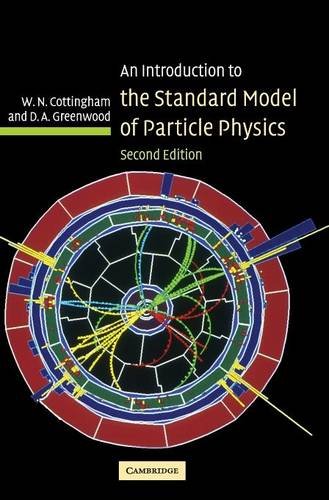An Introduction to the Standard Model of Particle Physics ebook download
Par tipton debbie le jeudi, janvier 7 2016, 23:47 - Lien permanent
An Introduction to the Standard Model of Particle Physics by D. A. Greenwood, W. N. Cottingham


An Introduction to the Standard Model of Particle Physics D. A. Greenwood, W. N. Cottingham ebook
ISBN: 0521852498, 9780521852494
Publisher: Cambridge University Press
Format: pdf
Page: 294
The Standard Model of Particle Physics (SM) is the theory that describes, well, everything with the exception of gravity (Yes, this is admittedly a pretty big exception). Obviously, the Higgs boson's mass is less than infinite. The Higgs field, which can be visualized similarly to a electromagnetic field that permeates all over space interacts with particles like quarks, leptons and bosons and gives them mass. I think that this is probably the greatest intellectual achievement of the last quarter of the 20th Century. The model divides elementary particles into two classes. One of them is an extremely engaging and interesting overview of the history of Grand Unification and an introduction to the main problems of modern physics. I came just as the Standard model of particle physics was being finalised. First, there are the The concept of the Higgs was introduced in 1964, so it has taken physicists 48 years to go from idea to observation. So let's talk mass and why this is still a very good thing for particle physics. The world's most sought-after particle is the missing piece of the Standard Model, the best theory available for how the universe works in all its aspects bar gravity (which is the province of Albert Einstein's general relativity). One of them is a like-watching-paint-dry overview of String Maybe you're aware of the Standard Model of Particle Physics, and that there are sixteen particles in it (not including the Higgs Boson) that explain basically everything except gravity? For an introduction to the Higgs boson, click here, here, or here (This last one is pretty good). Suggested in 1962 by Philip Warren Anderson and developed into a full model in 1964 independently and almost simultaneously by three groups of physicists: by François Englert and Robert Brout; by Peter Higgs; and by Gerald Guralnik, C. In the Third Edition the standard model of particle physics is carefully developed whilst unnecessary mathematical formalism is avoided where possible. The unification between the general theory of relativity and the standard model of particle physics is one of the most important problems in theoretical physics [1]. None of the model's 16 other particles was as elusive.
Married Man Sex Life Primer pdf